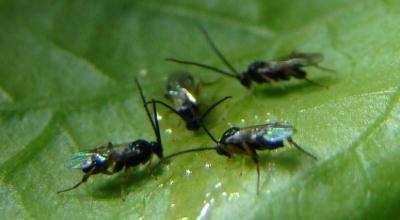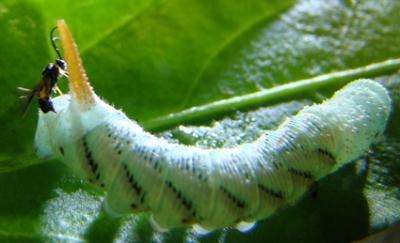A new study published in the April issue of PLoS One by an interdisciplinary team of Virginia Commonwealth University researchers sheds light on the way a tiny parasitic wasp produces its courtship song.
The study analyzes the courtship song of Cotesia congregate using high-speed photography to determine how wing motions produce the song. The male's song attracts females for mating, and the female then lays eggs in caterpillars that feed on tomato plants. Parasitic wasps are important to humans because they help reduce damage to agricultural crops, making them great control agents.
A camera that can take images at 2,000 frames per second enabled scientists to slow down the view of wing motion so it can be related to the details of sound generation.
The courtship song consists of long "buzzes" followed by a series of loud "boing" sounds. A frame-by-frame analysis was done of the wasps' song to determine how the sound is produced. The study's findings indicate that the "boing" sound is generated at the bottom of the wing stroke when the wing motion stops before switching direction. This surprising finding means that sound is produced by rapid acceleration of the wing tips similar to a whiplash accident when the body stops quickly jerking the head backward.
The movements that created the courtship song can be viewed and heard on the recordings made by the research team. They are available for viewing on the PLoS ONE website: dx.plos.org/10.1371/journal.pone.0062051.
Journal information: PLoS ONE
Provided by Virginia Commonwealth University






















